Lighting Regulations
This section discusses the basics of outdoor lighting, brightness, colour and different types of lights and sets out the principles that IDA recommends for homeowners. If you are interested in more technical information about these guidelines, and how they might translate into regulations under the proposed plan change, please click here.
Outdoor Lighting Basics
IDA recognises that we need outdoor lighting in the home, but has a set of 5 principles (shown opposite) which, if applied properly, will minimise or eliminate the effect on our night sky (as well as saving money and protecting the environment).
Three of those principles are straightforward, namely lighting should:
- only light areas where it is needed
- only be on when needed (ie on a motion sensor and / or timer)
- eliminate upward directed light (shielded).
Two others need a little more explanation, and introduce some measurements that will flow through to the proposed regulations:
- lighting should be no brighter than is necessary. There are different upper limits depending on whether the light is shielded (doesn’t shine upwards – maximum shielded is 1500 lumens) and / or on a motion activated sensor and timer control (maximum 2100 lumens). Broadly speaking, brightness is measured in lumens (see panel oposite)
- the amount of blue light should be minimised. The amount of blue light is determined by the Correlated Colour Temperature (CCT) of the light measured in Kelvins, and should be no more than 3000Kelvins, preferably less than 2700. (see Colour Matters panel below)

Unshielded lights should be no more than 1000 lumens
This translates to:
- 90 watts with legacy Tungsten Incandescent
- 9 watts to 15 watts with LED
- 13 watts to 20 watts with Compact Fluorescent bulbs (CFL)
Types of Light
Most people are familiar with incandescent or compact fluorescent bulbs for indoor lighting, but outdoor lighting usually makes use of more industrial sources of light, including:
- low-pressure sodium (LPS), old technology no longer manufactured
- high-pressure sodium (HPS)
- metal halide, and most recently, light emitting diodes (LEDs).
HPS is used for street lighting in many cities. Although it emits an orange-coloured light, its colouring is more “true to life” than that of LPS.
Where white light is necessary, commmon choices are metal halide and LED. One of the advantages of LED lighting is that it can be dimmed – turned down or off when not needed – saving on energy and reducing light pollution.
Because of their long life and energy efficiency, LEDs are rapidly coming into widespread use, replacing existing lighting in many cities. However, there are issues to consider when making such a conversion.
Colour Matters
It is crucial to control upward-directed light to reduce light polliution, but we now know that the colour of light is also very important. Lighting with lower colour temperatures has less blue in its spectrum and is referred to as being “warm.” Higher colour temperature light sources are rich in blue light.
IDA recommends that only warm light sources of no more than 3000 Kelvins be used for outdoor lighting, as blue light brightens the night sky more than any other colour of light. Both LED and metal halide fixtures contain large amounts of blue light in their spectrum.
Exposure to blue light at night has also been shown to harm human health and endanger wildlife.
In some areas, the white light of even a low-colour-temperature LED can be a threat to the local nighttime environment. In those cases, narrow-spectrum amber LEDs are the preferred choice.
In NZ, light bulb packaging is required to include values for both Lumens and CCT
Technical Information
This section includes IDA recommended guidelines for lighting in International Dark Sky Communities (IDSC). These guidelines address requirements for public lighting, illuminated signs, recreational and sports field lighting as well as private home lighting.
For comparison a summary of the regulations that have been adopted in other recently designated Dark Sky areas is also available below.
As the project progresses, we will update this page with draft regulations that have had input from key stakeholders and preliminary review from Council.
Please click on the appropriate button below for further information, or contact us if you have any questions.
IDSC Guidelines
The IDA guidelines for International Dark Sky Communities includes commentary on the lighting regulations required. Click the button below to see these.
Recent International Regulations
A summary of the outdoor lighting regulations adopted by a selection of other Dark Sky areas recently (mostly since 2018) can be seen by clicking below.
Draft TCDC Regulations
We will load draft regulations here once these have incorporated input from key stakeholders and initial Council review.
